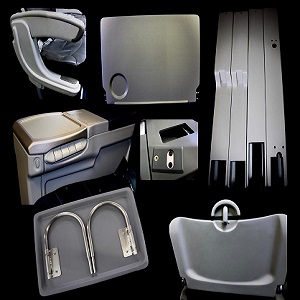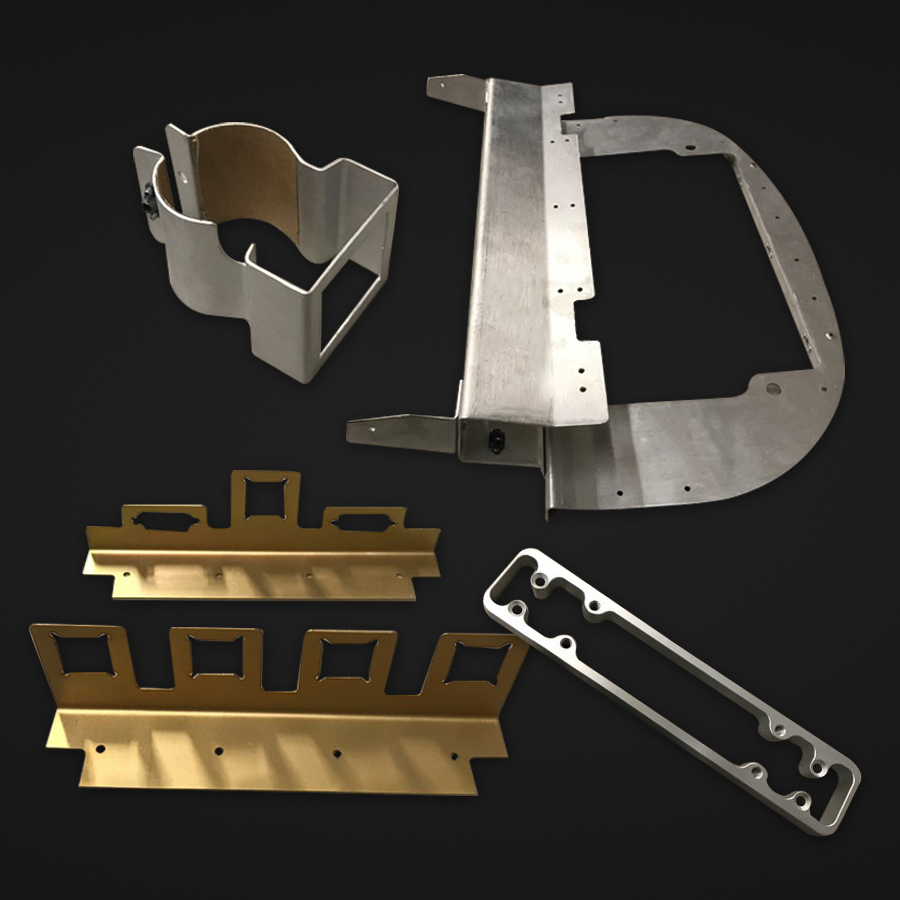The global aircraft seat material market is so vast it’s divided into sectors. The key sectors of the market consist of plastics, textiles, upholsteries, cushions, metals and seat structure. It’s interesting to look over the kinds of materials that are employed in the making of aircraft seats. A few of the main players in this industry include material manufacturers, aircraft seat OEMs, refurbishing companies, engineer and design companies, and a few others.
Seat Overhauls and More
At Dretloh, we specialize in aircraft seat repair, overhaul, and refurbishment. We are constantly looking for ways to ensure that construction provides a strong, lightweight, slim, fire resistant, and FAA and EASA documented product.
In this article, our seat overhaul and materials will be further examined.

Seat Plastics and Manufacturing
Dretloh Aircraft Supply can repair aircraft seat plastics, manufacture new thermoformed parts, and supply injection molded parts. We also have firm relationships to obtain OEM parts where required.
Some of our manufacturing services include:
‣ Part manufacturing
‣ Thermoforming
‣ Side panels
‣ Aircraft armrests
‣ Aircraft Interior plastics
‣ Food tray table refurbishment



Are you looking for more info?
The Design Process
In order to explain an overhaul fully, we must first begin with the aircraft seat.
The aircraft seat is segmented in 5 main units. The base of the seat is the structural frame, that is typically made with aluminum or carbon composites. The modern aircraft seat is segmented to include the plastic moldings, foam cushioning, fire resistant (FR) textiles, and upholsteries.
This is where customization comes in. Each client or airline uses different materials and combinations when designing their unique aircraft seat. Decision-making can depend on the client’s expectation for budget, durability, and weight.

Foam Cushions, Upholstery, and Metals
All of our aircraft seat foam cushions are fabricated using a unique high-speed process. A few of the materials used in the construction of aircraft seats include polyurethane, neoprene, silicone, and polyphenylene. Our Engineering and Design department can create new cushion designs as well as work from samples, drawings, or solid models.
Upholstery materials may include fire resistant polyester, cotton, leather, and nylon. These primarily cover the foam cushions and are also designed to be seat covers. At Dretloh, we manufacture standard, fire-blocked and flotation seat cushions and covers for all seat models including passenger and crew.
The aircraft’s unladen weight is 80% aluminum and is also the primary aircraft material. Aluminum is the ideal material for mass-produced commercial aircraft due to its extreme strength, lightness in weight, versatility, and workability.
Why Aren’t the Windows Aligned with the Seats in Aircraft?
Window placement on airplanes is often something that's wondered about by passengers. If you've questioned why airplane windows don't properly line up with their seats, you're not alone! Of course, this depends on a couple factors that we'll get down to here. Why...
The Pros of Aircraft Seat Overhaul vs. Buying New
As airplane seats get older, they tend to wear out. Ultimately, with heavy use they require periodic overhaul and upgrading. For example, the edges of the dress covers and fire block cushions can start to fray and tear. And the bottom and back diaphragms of seats also...
How to Design Aircraft Seat Foam Cushions for Comfort
When you design aircraft seat foam, you want it to be comfortable. If it's not, you're going to have a problem! Comfort is something to always keep in mind when you design aircraft seat foam for cushions. At Dretloh, we try our best to craft the comfiest seats we can,...





